
Background
IN0201 | |
Netherlands Arctic Station | |
Arctic | |
Open | |
Station | |
Netherlands | |
Station | |
1995 | |
June; July; August |
Introduction
The Netherlands Arctic Station is owned and run by the Arctic Centre of the University of Groningen. | |
The Netherlands Arctic Station is situated in Kongsfjorden on the island of Spitsbergen and is part of an international research community in the former mining town of Ny-Ålesund, Svalbard. In this town, more than 10 nations have their own station while using shared facilities for meals and recreation. The whole local community is focussed on science and maintenance of infrastructure. Several stations have independent terrestrial research programmes and the Netherlands Arctic Station is the smallest of all. | |
Kongsfjorden is a beautiful high arctic environment with several glaciers terminating in the fjord. The raised beach terraces are sparsely vegetated with dense moss cover around small tundra lakes and below bird cliffs. Locally there are clear traces of former human activity by trappers and from coal mining. At present, the whole area is well-protected and a special permission is needed to enter the islands during the bird breeding season. In 1978, reindeer was re-introduced and since 1982 barnacle geese have established a colony and are regularly feeding between the houses. Both herbivores have a clear impact on the vegetation. | |
From 1916 to 1968, the village of Ny-Ålesund was a coal mining settlement. This village has now developed into a unique mix of stations, laboratories, and research infrastructure. There is a small international community of 25 to 180 people – all temporal residents. Tourists are discouraged to stay overnight. In 1990, the University of Groningen initiated a project on barnacle geese and later joined the shared facilities with the establishment of Netherlands’ Arctic Station. The station consists of two small buildings for lodging with electricity but no plumbing. Shared facilities in town offer unique high-standard science and logistic support. There is a developing cooperation with the local German/French base AWIPEV. | |
Research focusses on the role of barnacle geese in the arctic ecosystem. Nutrient cycles, plant productivity, and vegetation patterns are studied to understand plant-herbivore interactions. Behaviour, timing, and breeding success of individually ringed geese are observed over their lifetime, and the effect of predators is studied as a dynamic interaction. Population trends of plants, herbivores, and predators are monitored in a warming environment. Long term experiments include grazing exclosures and greenhouses on paired vegetation plots. There are also projects focussing on the history of human exploitation and the effect of tourism on cultural heritage. | |
The local community in Ny-Ålesund is a mixture of nationalities from the various stations. The area is owned by a company called Kings Bay, taking care of the logistics for the entire village. Ny-Ålesund has no permanent residents and all activity is linked to science. The closest town is the Norwegian village of Longyearbyen, which is the main hub of Svalbard. In Longyearbyen, permanent residents are few (c. 2100). There are no indigenous people and most inhabitants originate from the Norwegian mainland and live on Svalbard only because of their temporal job assignment. Tourism, local administration, science, and coal mining are the most important sources of income. | |
All stations in Ny-Ålesund and the general facilities in town are only available on invitation of one of the stations. Throughout the year, Kings Bay organises two flights per week with a small plane (14 passengers) between Longyearbyen and Ny-Ålesund. In summer, there are about 30000 tourists landing by boat for just a few hours. There is only a limited amount of roads near the village. Local transportation is possible by car, bicycle, snowmobile, or foot. Small boats are used for transportation inside the fjord. |
Operator
University of Groningen, Arctic Centre | |
Private | |
University of Groningen, Arctic Centre | |
m.j.j.e.loonen@rug.nl |
Data Source
Partner Institution
Yes | |
AWIPEV (local station) German-France combination |
Location
IN0201 | |
78° 55' 0'' N | |
11° 56' 0'' E | |
European Arctic | |
10 | |
0 | |
556 | |
115 | |
0 | |
1 | |
0.01 | |
Ice-free ground |
Climate
Continuous | |
High Arctic | |
Snow and Rain | |
400 | |
4 | |
21.6 | |
E | |
01/Jul/74 | |
-6 | |
-13.9 | |
-14.6 | |
-14.2 | |
-11.1 | |
-4 | |
1.5 | |
4.9 | |
3.9 | |
-0.3 | |
-5.7 | |
-10 | |
-12.5 | |
May | |
June; July | |
June; July; August; September; October; November |
Features
Bird colonies; Blue ice; Clear air zone; Coast; Fauna; Fjord; Ice cap or glacier; Lake; Melt streams; Shoreline; Tundra | |
Polar deserts/semi-deserts; gramminoid tundra; peatlands; human settlements or resource use in the area |
Disciplines
Archaeology; Biology; Botany; Climate change; Ecology; Evolutionary biology; Human impacts; Marine biology; Pollution; Population monitoring; Terrestrial biology; Zoology | |
Ecosystem services; land-use change |
Human Activities
Yes | |
Recreational activities | |
Coal Mining, huts | |
none but science support | |
Yes | |
Yes | |
Yes | |
Yes |
Infrastructure
IN0201 | |
114 | |
16 | |
Biology | |
all types of laboratories and facilities are for rent outside the station | |
50 | |
16 | |
10 | |
yes | |
central facilities | |
Fossil fuel | |
220 | |
24 | |
No data |
Staff Capacity
1 | |
6 | |
0 | |
0 | |
7 | |
2 |
Scientific Equipment
Very basic, blood sampling, species collection | |
Advice, safety and access as long as it all fits within the research programme at the station |
Medical Facilities
No | |
0 | |
Nurse | |
0 | |
Basic | |
Other | |
docter service on telephone with helicopter evacuation capabilities | |
115 | |
0 | |
0 | |
0 | |
0 | |
Weapon, VHF radio, survival kit | |
No | |
No |
Vehicles
Aluminium small boats | |
Bicycle |
Workshop facilities
ICTS (Staff available to assit with constructions) | |
all for rent nearby |
Communications
Computer; E-mail; Internet; Printer; Scanner; Telephone |
Access
IN0201 | |
Air; Sea |
Aircraft landing facilities
1 | |
1000 | |
50 | |
Gravel | |
Yes |
Transport and freight
Car; Ship; Walking | |
100 | |
June; July; August | |
Pier/Jetty; Port | |
250 | |
January; February; March; April; May; June; July; August; September; October; November; December |
Access To The Facility
Yes | |
Yes | |
m.j.j.e.loonen@rug.nl | |
m.j.j.e.loonen@rug.nl | |
0047 7902 6852 (station) 0031 50 720 0449 (yearround via skype) | |
www.arcticstation.nl |
Pictures
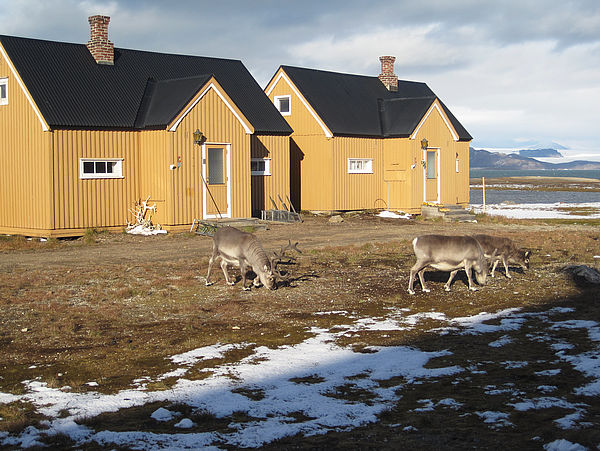 Reindeer and station (Credits: Maarten Loonen) |
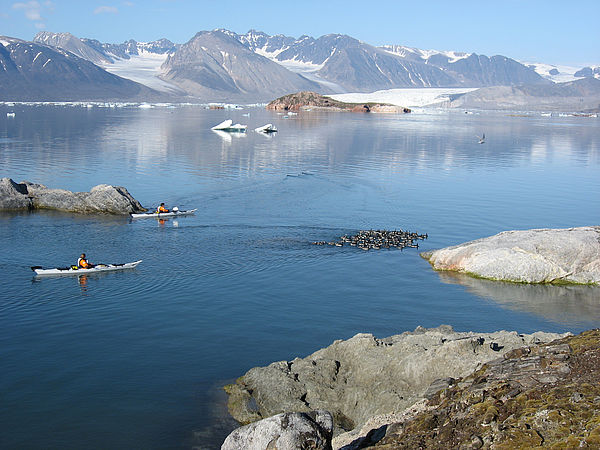 Barnacle Geese herding (Credits: Maarten Loonen) |
 Fox and youngs at station (Credits: Maarten Loonen) |
 Barnacle geese (Credits: Vincent Muster) |
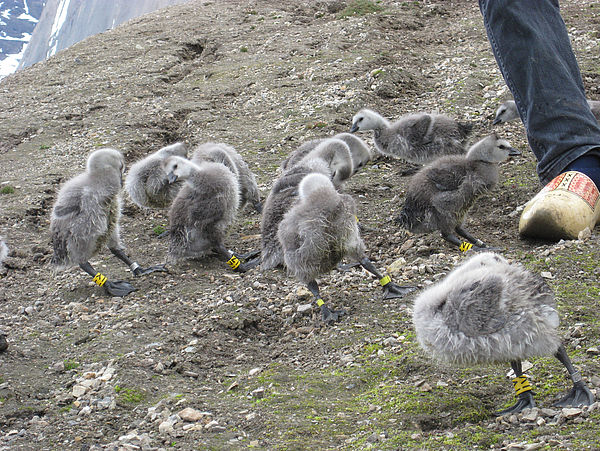 Barnacle goose chicks (Credits: Maarten Loonen) |
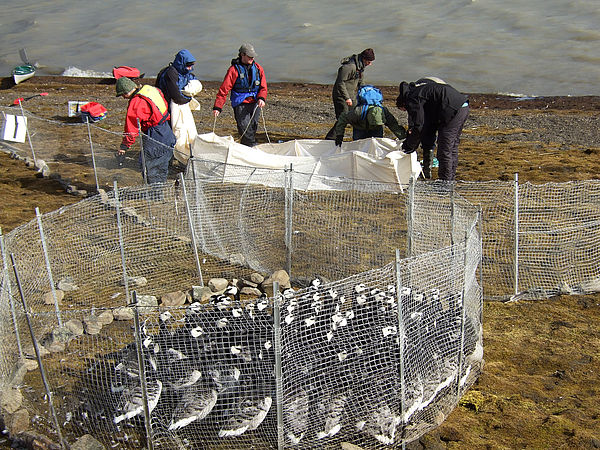 Goose research (Credits: Maarten Loonen) |
 Goose ringing (Credits: Maarten Loonen) |
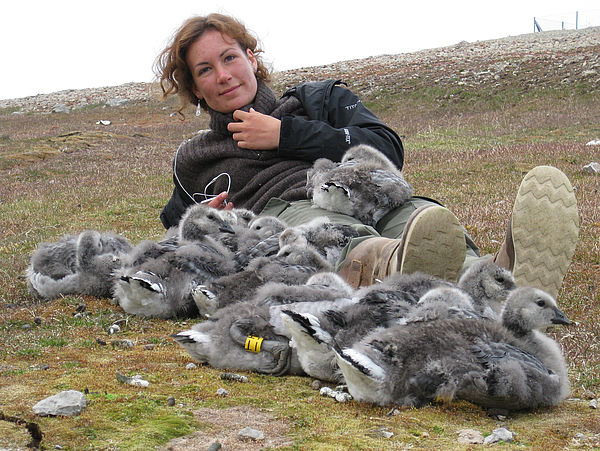 Relaxing goose chicks and researcher (Credits: Maarten Loonen) |
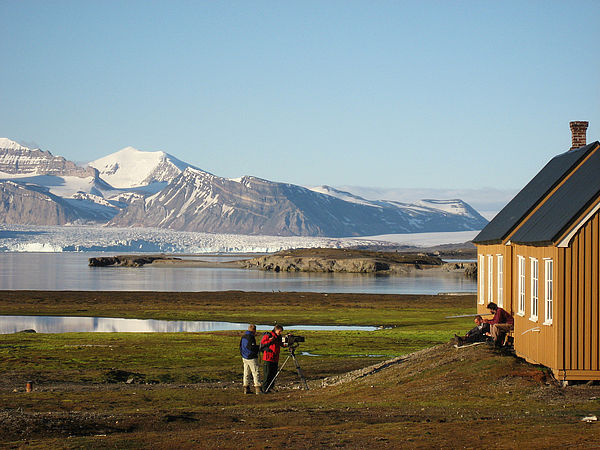 Station and landscape (Credits: Maarten Loonen) |
